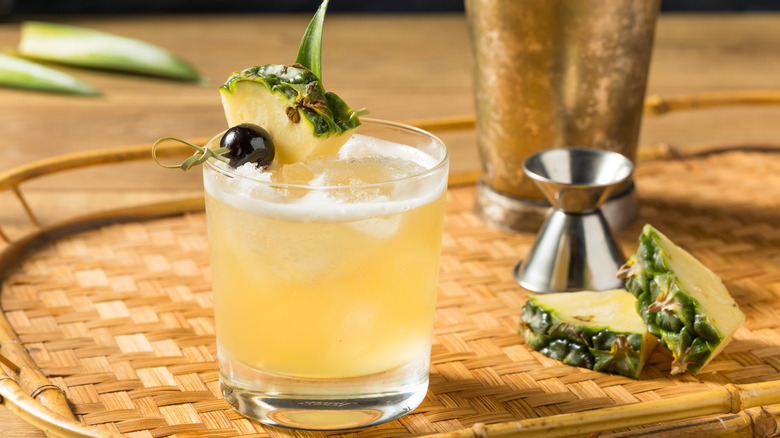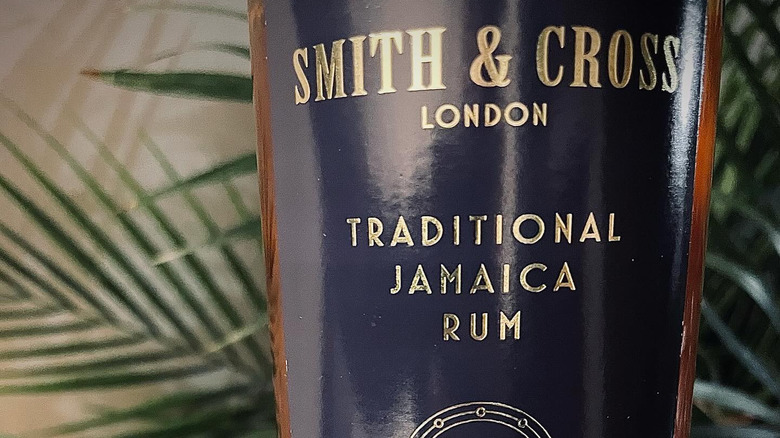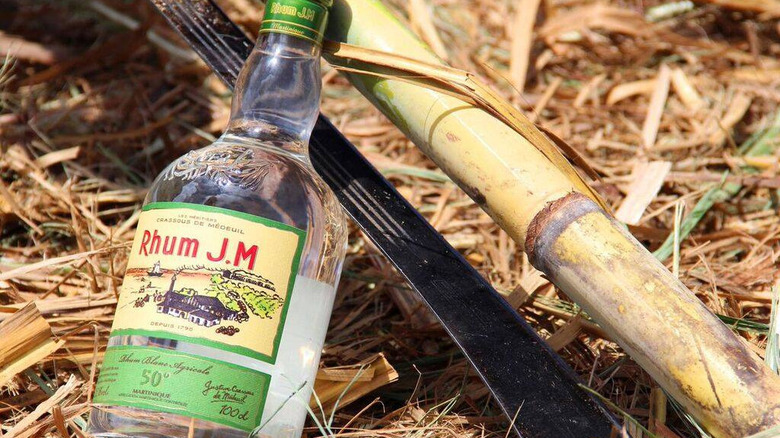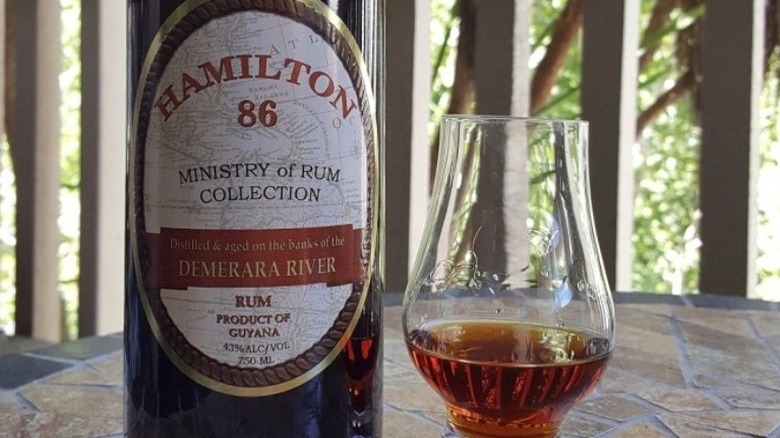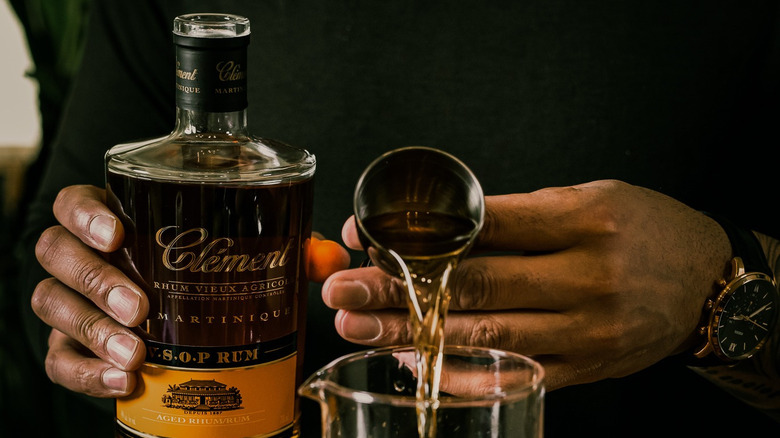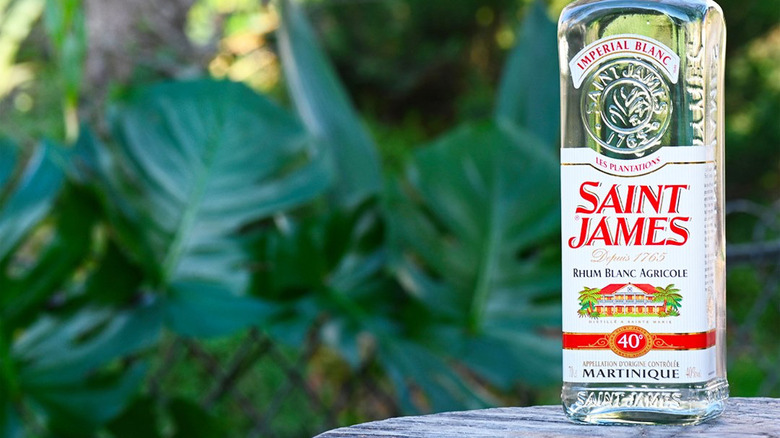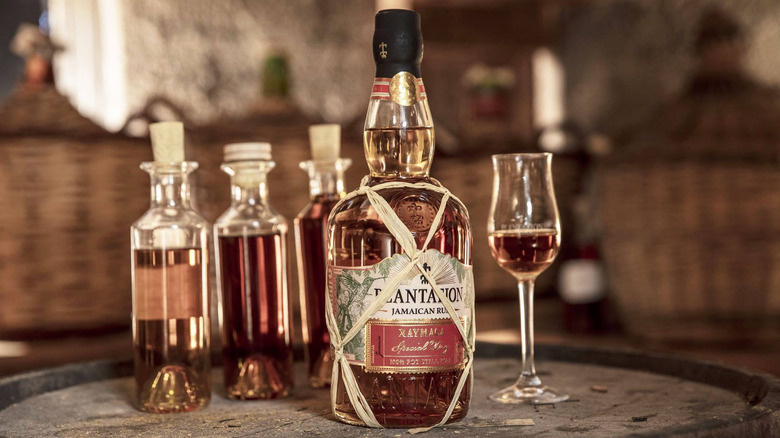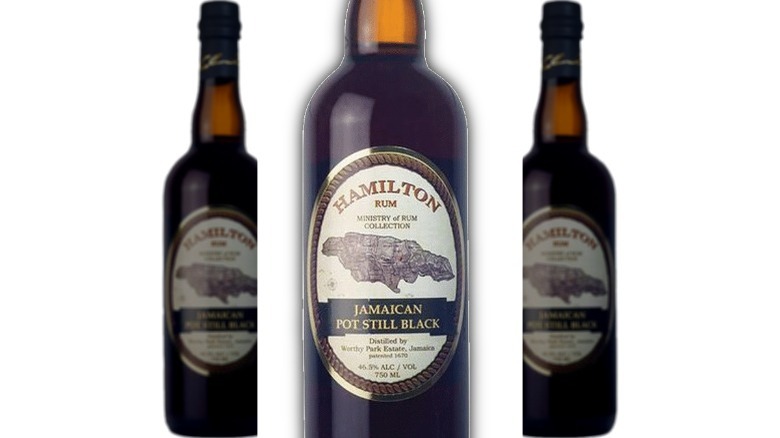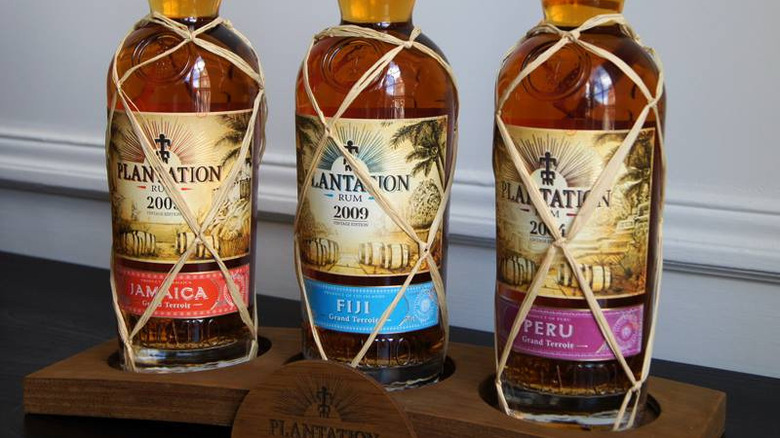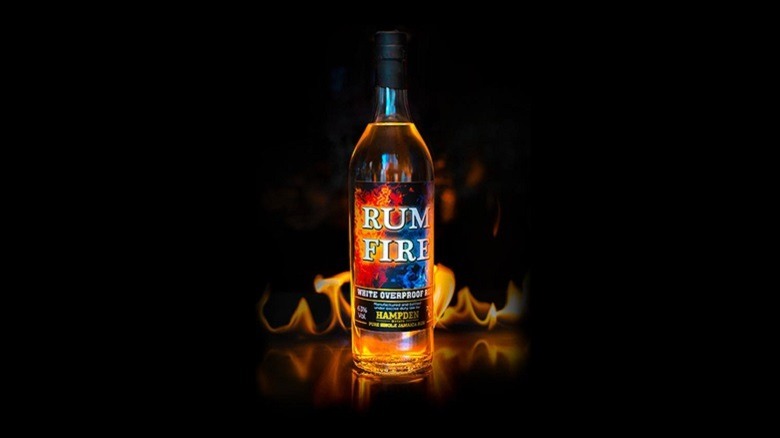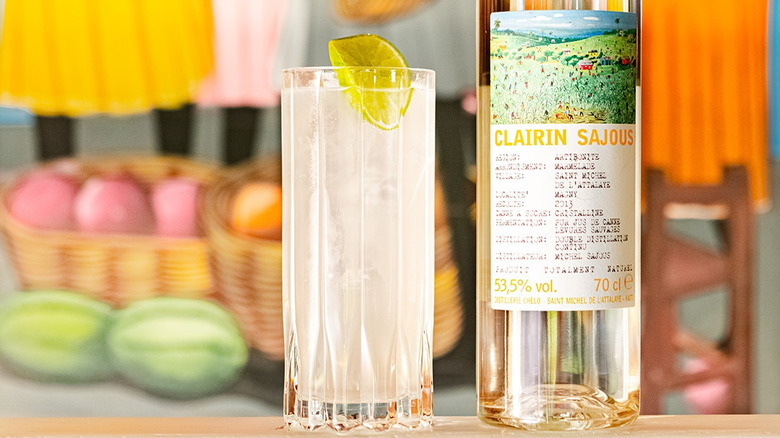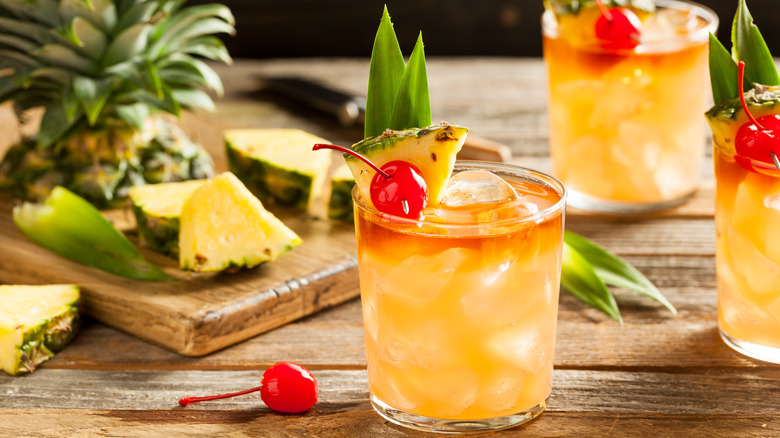10 Best Rums For A Mai Tai, According To Industry Experts
Now a tiki classic, the original mai tai cocktail was concocted in 1944 by Vic Bergeron for his Trader Vic's restaurant in Oakland, California. The original drink contained fresh lime juice, orange curaçao, orgeat syrup, rock candy syrup, and 17-year-old Jamaican J. Wray Nephew rum. Over the years, the mai tai has changed with the times. Mostly, it became as sweet and technicolored as a 1980s power ballad. As the drink continues to morph, so too do the best types of rum to use for making a mai tai.
The recent back-to-basics craft cocktail revival has brought the original 1944-style mai tai back into vogue. But, in yet another twist, the 17-year rum initially used in the recipe is no longer available. The most prevalent modern version replaces the original spirit with two separate rums. A Jamaican-style pot still rum is used to give the drink a robust funkiness, and a Martinique-style rhum agricole ships crisp, grassy notes.
So, which pot still rums and rhum agricoles are the best to use? And, is there a rum that can pull double duty? With these questions in mind, we recently turned to two industry professionals — Anton Kinloch, a partner at Fuchsia Tiki Bar in New York's Hudson Valley region, and James Oppedisano, the owner of the iconic Hala Kahiki in Chicago — for recommendations on the best mai tai rums.
Smith & Cross
Jamaican rum is a mai tai essential for most cocktail experts, but one of the most popular selections doesn't actually come from Jamaica. Smith & Cross is a distillery based in London that traces its roots to an 18th-century sugar refinery near the London Docks. Putting bona fides aside, Smith & Cross Jamaican rum is prized by mai tai enthusiasts for two things: funk and flex.
"It's a navy-strength rum, which clocks in at about 57% alcohol by volume," Anton Kinloch tells us. "I'm more of a funky mai tai guy, and so I love a Jamaican pot still like Smith & Cross."
In a mai tai, this rum provides earthy complexity and body, from which all other ingredients can resonate. Smith & Cross is also one of the best sipping rums, with tasting notes of molasses, brown sugar, lemongrass, copper, and lime. At 57% ABV, you might expect an overpowering alcohol burn, but the rum's complexity conceals its strength.
Best of all, Smith & Cross Jamaican rum is a relative bargain. A 750 milliliter bottle can be bought for less than $30, making this an affordable mainstay for any home (tiki) bar.
Rhum J.M
While most rums are made from molasses, Martinique-style rums are very distinct in that they are made from fresh-cut sugar cane. This more agrarian approach to rum creation gives these spirits a unique category known as rhum agricole — French for agricultural rum. Distilleries in the former French colony of Martinique that follow strict rum production guidelines can be certified AOC (appellation d'origine contrôlée) by the French government.
When asked what rhum agricole should go into a mai tai, Kinloch's first recommendation was the white, 50% ABV rum from Rhum J.M: "I love using this Martinique rhum. It's really nice for a mai tai because it has this perfect grassiness."
In addition to grassy notes, this white rum also offers a unique minerality derived from its unique terroir: Sugar cane used by the distillery is grown in volcanic soils. Other flavor notes like stewed banana and grilled pineapple make this rum a natural fit in a mai tai.
Hamilton 86 Demerara Rum
Demerara is a coastal region in the South American country of Guyana that is associated with a specific style of rum making. Using a wooden still gives these rums a fruity quality and medium body. Demerara rums get compared to Jamaican-style rums, but the former tend to be smoother and less funky.
The Hamilton rum label was created by Ed Hamilton, a rum importer and self-appointed Minister of Rum. Developed for Hamilton's Ministry of Rum line, Hamilton 86 Demerara Rum is actually a blend of both pots still and continuous still rums. After being aged in Guyana for five years, the rums are blended to 86 proof, or 43% alcohol by volume.
The rum offers a balance of sweet and bitter notes that translate well into many different cocktails. For a mai tai, Anton Kinloch recommends "utilizing Hamilton 86 in conjunction with a 100-proof rhum agricole." If you need measurement, Kinloch suggests a ratio of "three parts 86, to one part agricole blanc."
When considering the best mai tai rums, it's also important to consider accessibility. As such, Hamilton 86 is moderately priced and widely available.
Rhum Clément VSOP
Rhum agricole comes in two varieties: unaged (or blanc) and aged. As an aged variety, Rhum Clément VSOP imparts the grassy notes that are a signature of rhum agricole, but aging adds flavors of cocoa and smoky vanilla.
At Hala Kahiki, James Oppedisano uses Clément VSOP in his bar's take on the original mai tai. Oppedisano says that using aged agricole is more of a business decision than a personal preference: "I love unaged agricole, but it doesn't appeal to the masses as much as aged agricole. We've found that people like the mellowness of aged agricole. You still get the grassy notes and the essence of what an agricole is, but without it being too much."
Meanwhile, in the Hudson Valley, Kinloch says he prefers making mai tais with agricole blanc: "I like my mai tai to be a little bit crisp and clean. Aged agricole has its place, for certain, but it gives a mai tai to many dark tasting notes, like a little bit more flavor from the aging barrel. I really want the orgeat to stand out. I want the curaçao to stand out. I want to be able to taste all of those components individually."
Saint James Imperial Agricole Blanc
Trying to decide on a lower-cost spirit can be a bit of a conundrum. After all, it is often common to associate higher prices with greater quality. However, if two producers follow the same stringent production standards, a cheaper bottle can have many more benefits. Specifically, it is actually a better fit for people looking to stock a home bar on a budget.
Widely available for less than $30, Saint James Imperial Agricole Blanc is a good example of how you can trust an AOC-certified rum to deliver big flavors at relatively smaller prices. Earning its Rhum Agricole A.O.C Martinique status in 1996, the Saint James distillery celebrated its 250th anniversary in 2015.
The rum comes highly recommended by Hala Kahiki's rum expert Hayes Webster for both its price point and its taste. As Webster has it, he's been using this rhum agricole for years, and it "works great" in a mai tai. There are more refined agricole blancs out there, for sure, but this particular rum hits all of the right notes: grassy, vegetal, hints of fruit, and a peppery finish. The result is an agricole that neatly galvanizes with funkier pot still rums.
Plantation Xaymaca Special Dry
Owned by the French corporation Maison Ferrand, a famous cognac brand, Plantation Rum spirits are set apart from other rums by a unique aging process. After distillation and aging in the West Indies, the rums are shipped to Cognac, France, where they are aged again in cognac barrels. For a mai tai, Kinloch recommends Xaymaca Special Dry from Plantation Rums as "a good budget-friendly rum that you could definitely use in conjunction with a rhum agricole blanc."
Plantation uses a special process that resulted in this rum. Xaymaca Special Dry was developed by Plantation's master blender and founder Alexandre Gabriel as a deep dive into the rum-making culture of Jamaica. Gabriel said Xaymaca is a result of wanting to work with complex flavors with "an almost 'animal intensity.'" The tasting notes for this spirit are just as wild.
When you open the bottle, you'll notice a balancing contrast between the nose and palate. The aroma sometimes borders on a smokey, nearly meaty scent, followed by vanilla and grilled tropical fruits. However, the palate of this rum becomes fruiter and full of herbaceous punch with tastes of apple, apricot, orange, grape, and pear.
While this Jamaican rum can be intense, multiple years of aging slightly mellow the funk and allow the island terroir to shine. When used in a mai tai, Xaymaca asserts its character but still allows the other ingredients to bloom alongside.
Hamilton Jamaican Pot Still Black
As we've discussed, the modern approach to recreating Trader Vic's original 1944 mai tai requires more steps. It's common practice to use a Jamaican pot still rum along with a rhum agricole. But, if you're feeling lazy and not exactly a purist, it's perfectly acceptable to just use one rum in your mai tai. How do you know what single rum to pick? "If you're using just one rum, Hamilton Jamaican Black is a great one," says Anton Kinloch.
Made from a blend of very light, light, and heavy pot still rums, Hamilton's Jamaican Black rum offers the bold expression you'd expect from a layered rum like this, but Hamilton's is slightly dialed back with a little bit of sweetness. The rum has earthy notes of overripe bananas and dried fruit, which play naturally well with the citrus, nutty, and floral ingredients in a mai tai.
Being the product of a rum importer, most Hamilton rums have approachable price points and flavor profiles. So, perhaps it's no surprise that these rums are quite popular with tiki bartenders at Kinloch's Fuchsia Tiki Bar: "We utilize a fair amount of Hamilton products. They also have a great Zombie rum blend, which is a separate topic all on its own."
Plantation Vintage 2005
Because rum is such a varied liquor category, the idea of "best rums" for any drink can be subjective. Often, the finest rum to use in a cocktail is the one you prefer the most. That said, experienced or well-versed rum drinkers are more likely to appreciate a mai tai with significant complexity. For a highly-complex Jamaican pot still, Kinloch recommends trying a bottle from Plantation Rum's Vintage series — specifically the 2005 vintage.
After production began in 2005, the vintage was released for sale in 2019 and is a 100% pot still blend from two different Jamaican distilleries. After being aged in Jamaica for 12 years, this vintage was shipped to France for one to two more years of aging. The result is a "rustic" and "intense" rum with notes of banana, dried fruit, and roasted coffee. Although the deeper aging creates traits that make this rum very distinct in a mai tai, it is a high-quality option that can provide a nuanced and subtle difference to your cocktails.
As such, Kinloch admits that these bottles are fairly pricey — and that's if you manage to track one down. "When it was more readily available, I used to use the Plantation 2005 as the base for my mai tai," he said. "But for those looking to get a little more adventurous, I would definitely recommend using any vintage Jamaican rum from Plantation."
Hampden Estate Rum Fire
If you're made it this far, you're clearly committed to finding something different, and so it's time we took a turn into choppy waters.
With red and blue flames on an all-caps label, Hampden Estate Rum Fire Overproof Jamaican Rum isn't for the faint of heart. The bottle and its label stare you down like a Sith Lord, daring you to confront the contents within. This liquor feels as hot as it looks. And while it may be an adventurous base for your mai tai, you should keep some things in mind.
"A mai tai with Rum Fire can get a little overpowering," James Oppedisano warned us. Yet, Hampden Estates describes the fragrance of its liquor as true to the essence of white rum. The brand uses denominators such as "genuine" and "authentic," and although Oppedisano cautions that "for people who aren't into rum, it can be a little too much," Hampden stakes a claim that Rum Fire has a dedicated community of fans who value its un-aged potency.
Certainly, those willing to conquer this leviathan will likely come to appreciate the ferocity of Rum Fire. Adventurous mixologists will find plenty of mai tai inspiration with this rum's depth of flavor, which includes ripe banana, mint, apple, and clove notes.
Clairin Sajous
Originating in rural Haiti, clairin is a category of rum that resembles rhum agricole. While it offers the same vegetal and grassy notes as agricole, clairin also ships strong funk and even a bit of salinity. Some have even called it rum's answer to mezcal. Until a few years ago, clairin was hard to come by in the U.S., but importers are now increasingly bringing the spirit stateside as Americans grow to appreciate it. At Hala Kahiki, the bartenders have been woodshedding Haitian mai tais that make use of clairin.
Per James Oppedisano, "I've never really experimented with [clairin rum] until the last two years or so. They've really surprised me because there are so many options. They go so many different ways. They're fun!"
For a mai tai, Oppedisano suggests using Clairin Sajous as a like-for-like replacement for rhum agricole. Depending on personal preference, you could use a one-to-one ratio of clairin to a pot still rum. The bartenders at Hala Kahiki, however, have been favoring more of a two-to-one ratio, with the favor going to clairin.
"You can get such vibrant flavors and gives it almost like a salinity," Oppedisano says. "It just completely elevates the flavor profile." For Sajous, organic ingredients combine to form a creative meld of apple, olive, bee pollen, and pickled herb notes. This bottle may be pricier, but it can create some of the most unique expressions of a mai tai that you're likely to find.
Methodology
To determine the best rums possible for making mai tais, we reached out to a pair of experts who know the drink well. Anton Kinloch attended the Culinary Institute of America before becoming the principal owner of the temporarily closed Fuchsia Tiki Bar in New Paltz, New York. James Oppedisano is a co-owner of Chicago's iconic Hala Kahiki Tropical Lounge, which first opened at its current location in 1964, and has been operated by his family for generations.
